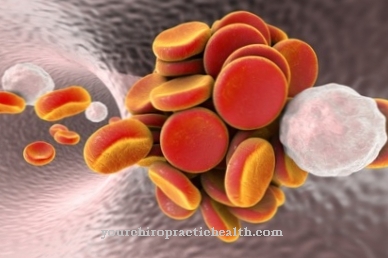Under the term Opioids strong painkillers are grouped together. They can lead to addiction if used excessively.
What are opioids?

Opioids, which are used as pain relievers, also carry the name Opioid analgesics. These agents have a strong pain-relieving effect on the opioid receptors. Morphine is one of the best-known opioids. It has been used in the treatment of pain since the 19th century. The morphine is obtained from the opium poppy. Nowadays, synthetic and semi-synthetic opioids are also used.
A distinction is made between therapeutically effective and improperly administered opioids. While therapeutic opioids are used in medicine as a means to treat pain, improperly administered opioids are used as intoxicants. The therapeutically administered opioids are mostly derivatives of natural alkaloids. These can be chemically modified and act as agonists on subtypes of opiate receptors.
Well-known opioid representatives are u. a. Tramadol, tilidine, oxycodone, fentanyl, alfentanil, meptazinol, sufentanil, pethidine and diamorphine, which is also known as heroin. Like all other opioid analgesics, they mostly fall under the Narcotics Act.
Opium serves as the basic substance of opioid analgesics. This is the milky sap of the opium poppy plant species (Papaver somniferum), which contains different types of alkaloid. They serve phenatrene like morphine, thebaine and codeine as well as benzylisoquinolines like noscapine, narceine and papaverine.
Pharmacological effect
Opioids work directly on the central nervous system (CNS). The switching points of the nerve cells are specifically blocked, which prevents the transmission of pain signals.The pain-relieving effects of opioid analgesics result from µ-receptors, which are sub-forms of opioid receptors.
If a person suffers from physical or psychological stress, the body's own substances such as enkephalins and endorphins are released from the brain. These have the property of attaching to the opioid receptors, which turns off the perception of pain for a short time. For this reason, for example, victims of accidents are often initially unable to perceive the pain of their injuries. The pain can only be felt later. Through this reaction, the body suppresses paralyzing pain reactions so that the person remains able to act.
Opioids also act on these receptors. They suppress pain, reduce anxiety, inhibit breathing, block the cough center and weaken the ability to concentrate. In addition, there is a narrowing of the pupils, a decrease in urine output, the stiffening of the skeletal muscles, the widening of the blood vessels and the release of the hormone histamine. Since the bowel empties more slowly, this leads to constipation. Some of these effects are considered undesirable, which is why they are classified as side effects.
Medical application & use
Opioids are used for particularly severe pain. They are an important part of medical pain therapy. The pain is usually cancer pain, colic pain, pain caused by an accident or pain during surgery. Another indication is pain in the musculoskeletal system such as rheumatoid arthritis, osteoporosis (bone loss) or osteoarthritis.
Opioids can be administered in different ways. They can be taken in the form of tablets, injected by syringe or given as a suppository. Patches with transdermal effects are also available.
One of the notorious effects of opioids is their mood-enhancing properties. For example, some people use substances containing opioids to get excited, which comes under substance abuse. Opioid analgesics can therefore only be prescribed on prescription and are subject to strict medical control.
Basically, opioids are the most effective pain relievers that are used in medicine. A distinction must be made between weak opioids such as tramadol and strong agents such as morphine and fentanyl.
You can find your medication here
➔ Medicines for painRisks & side effects
Because of the high potential for addiction, some doctors and patients are very skeptical about opioids. When used correctly, however, they provide optimal pain management and are usually well tolerated. However, a common side effect is constipation. In such cases, the patient can stimulate his bowel function by naturally acting agents such as flaxseed or prunes. But laxative drugs can also help.
Other undesirable side effects when taking opioids are nausea and vomiting, which, however, subside after one to two weeks. Alternatively, anti-emetics can be given to reduce nausea. Not infrequently, the patients also suffer from dizziness and fatigue. These side effects are particularly evident in the initial phase of opioid therapy and soon disappear again.
Problems with urination, dry mouth, itching and cardiovascular problems are considered to be rather rare side effects. These symptoms are difficult to treat.
In the event of an overdose of opioid analgesics, the dreaded respiratory depression threatens. In the worst case, this can even result in life-threatening respiratory failure.
Another problem with opioids is that they are highly addictive. If addiction occurs, those affected experience physical withdrawal symptoms such as motor restlessness, goose bumps, faster breathing, sneezing, strong tears, cold sweat, increased blood pressure and pain. After a few weeks, the withdrawal symptoms usually subside.
Psychological dependence is also possible for a certain period of time. This comes about through the euphoric effects of the opioids. The affected individuals then exhibit an insatiable need for opioid use. Heroin addiction is one of the best-known forms of opiate addiction.
However, if the opioids are used exclusively in pain treatment, the risk of addiction is considered to be low with proper therapy.



























